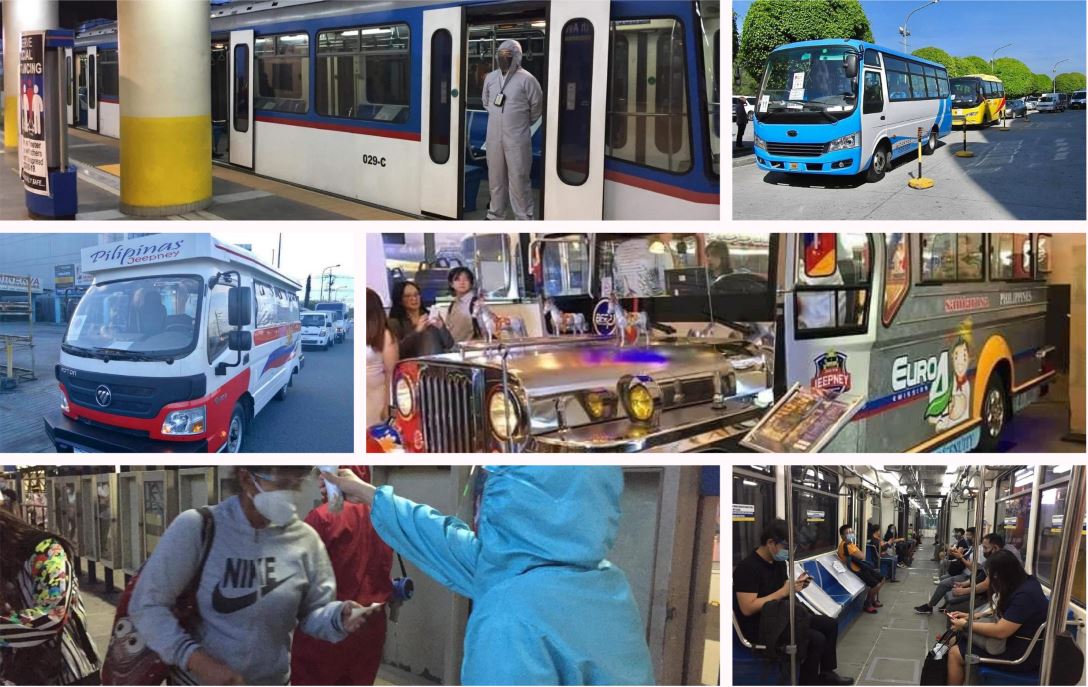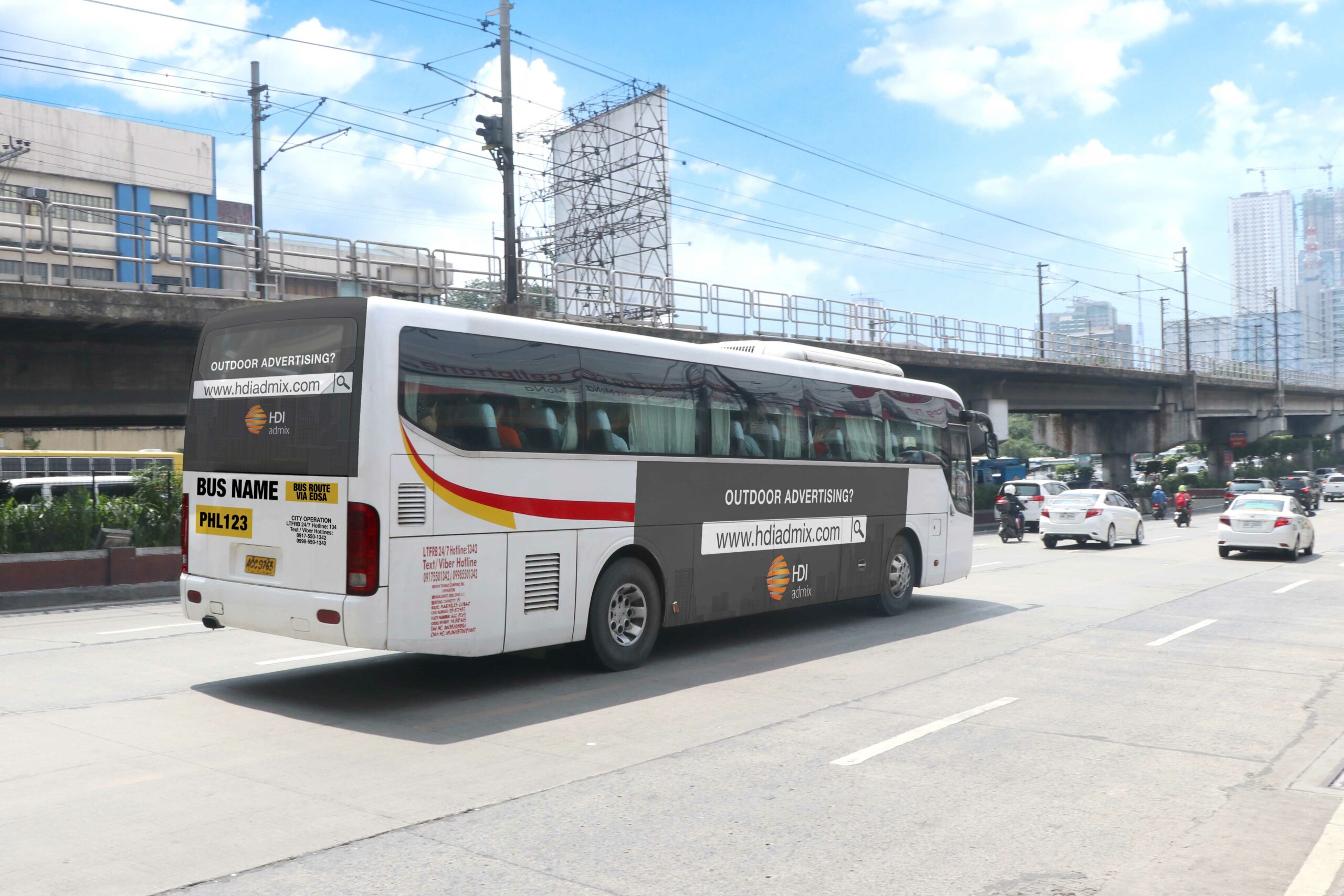Leading Benefits of Transit Advertising Philippines for Organizations
Leading Benefits of Transit Advertising Philippines for Organizations
Blog Article
Exactly How Transportation Advertising Can Change Mass Transit Spaces Into Dynamic Marketing Platforms
Transportation advertising holds considerable potential to redefine public transport rooms into vibrant marketing platforms that notify and involve. By using ingenious styles such as interactive stands and digital displays, brand names can not just reach a diverse audience yet also improve the total commuter experience. This method produces an one-of-a-kind possibility for brand names to get in touch with consumers in a setup that is usually neglected. As we check out the diverse benefits and developing approaches of transportation marketing, it raises the concern of how this makeover can redefine our communications with both brands and the urban setting.
Advantages of Transit Advertising

In addition, transportation advertising and marketing is very affordable compared to traditional media. It allows advertisers to achieve high impressions at reduced prices, taking full advantage of roi. The restricted audience of commuters provides a chance for brand names to communicate their messages to individuals who are typically responsive during their traveling times.
Additionally, the dynamic nature of transportation marketing allows projects to be updated regularly, making certain that messaging continues to be pertinent and timely. This versatility can be vital in reacting to market fads or advertising events, maintaining the brand name top-of-mind for customers. Last but not least, the pervasive existence of transit advertising adds to brand name recall; duplicated exposure within acquainted travel contexts reinforces brand understanding and fosters customer commitment, ultimately boosting and driving sales brand name reputation.
Kinds Of Transit Advertising And Marketing
Mass transit systems supply different styles for advertising and marketing, each accommodating different marketing techniques and target market interaction methods. One popular type is outside bus and train covers, which cover the entire car and develop a mobile billboard effect, enabling high exposure in metropolitan environments. These covers can record attention as they go across hectic streets, getting to a diverse target market.
Another preferred style is interior marketing, that includes posters, electronic screens, and advertisements on transportation seats. These placements engage passengers during their trip, reinforcing brand name messaging in a restricted area. Digital presents, particularly, use the benefit of dynamic material, enabling advertisers to upgrade messages in real-time.
Terminal marketing is also significant, featuring posters, banners, and interactive booths within transportation terminals. These ads leverage foot traffic and can target particular demographics based upon location.
Last but not least, promotional collaborations with transit authorities can bring about one-of-a-kind projects, such as themed transit experiences or occasions, boosting the total interaction with commuters. Each kind of transportation advertising and marketing uses distinctive advantages, allowing brands to customize their technique to effectively reach their target market within the public transportation environment.
Involving Travelers Effectively
Commuters are progressively inundated with marketing messages throughout Full Report their everyday travels, making it essential for brands to involve them in innovative means. To record interest in this congested space, advertisers have to focus on imagination and importance. Using eye-catching visuals and concise messaging can considerably improve the chance of interaction.
Interactive elements, such as QR codes or enhanced truth functions, can additionally change static advertisements right into immersive experiences, cultivating a much deeper connection with the target market. Brands ought to focus on dealing with travelers' demands and passions, customizing messages to resonate with their lifestyle, whether with promos for regional businesses or solutions created to enhance their travelling experience.
Moreover, timing plays an important function; purposefully positioning advertisements during height commuting hours can maximize exposure and influence. Involving commuters properly also includes leveraging social media sites integration, allowing passengers to share their experiences or promotions directly from transit systems, thereby enhancing brand reach.
Essentially, effective engagement pivots on understanding the traveler trip and developing compelling, interactive, and pertinent advertising experiences that not just record attention but also drive action and loyalty. By doing so, brands can change mass transit into a vibrant advertising and marketing system that reverberates with its audience.

Measuring Advertising Effect
Just how can brand names properly examine the performance of their ad campaign in transit settings? Determining the impact of transportation advertising calls for a multifaceted strategy that combines measurable and qualitative metrics. One widespread method is tracking engagement through mobile analytics, where brands can examine foot traffic patterns and app interactions in the past, throughout, and after campaigns.
Surveys can supply useful insights right into brand recall and customer sentiment, allowing brands to evaluate just how well their messages reverberate with travelers. In addition, keeping an eye on social media sites involvement associated to certain projects can expose shifts in public assumption and brand name discussion.

Furthermore, working together with transit companies can improve measurement precision, as they frequently possess comprehensive market information on ridership trends. By integrating these methodologies, brand names can develop a thorough understanding of their marketing effectiveness, ensuring that their projects not just reach but also influence their target audiences efficiently.
Future Fads en route Advertising
A significant shift is anticipated in transit advertising and marketing as technical innovations and transforming customer habits reshape the landscape. Transit Advertising Philippines. The combination of digital the original source displays and multimedias is anticipated to boost interaction, enabling brands to supply vibrant web content that resonates with diverse target markets. As mass transit systems welcome clever technology, marketers you can try here will utilize real-time information analytics to tailor messages based on guest demographics and habits
Moreover, enhanced truth (AR) is positioned to reinvent the method commuters engage with ads. By offering immersive experiences, AR can transform an ordinary trip right into an appealing story that catches interest and cultivates brand name commitment. This advancement will likely urge marketers to create more experiential campaigns that drive customer communication.
Sustainability is an additional important trend affecting transit advertising and marketing. As ecological consciousness expands, brand names will increasingly look for to line up with eco-friendly practices, utilizing lasting products and promoting green efforts within their projects.
Conclusion
Finally, transit advertising and marketing offers significant benefits by boosting brand visibility and engaging a restricted audience. Via various styles, such as outside covers and digital displays, it transforms mass transit right into a lively advertising and marketing system. Effective engagement techniques and robust dimension strategies additionally amplify its effect. As patterns develop, the possibility for innovative interactions between brand names and travelers is positioned to grow, making sure that transit advertising remains a vital part of modern-day advertising methods.
Transportation advertising holds substantial potential to redefine public transport areas right into dynamic advertising systems that notify and involve. The prevalent presence of transportation marketing adds to brand recall; duplicated direct exposure within familiar traveling contexts enhances brand recognition and fosters consumer commitment, eventually driving sales and improving brand credibility.
Exactly how can brand names properly evaluate the effectiveness of their marketing campaigns in transportation environments?In final thought, transportation marketing supplies considerable advantages by improving brand name visibility and engaging a captive audience. Transit Advertising Philippines. As trends progress, the possibility for cutting-edge communications between travelers and brands is positioned to expand, making certain that transit marketing stays an essential part of modern-day advertising methods
Report this page